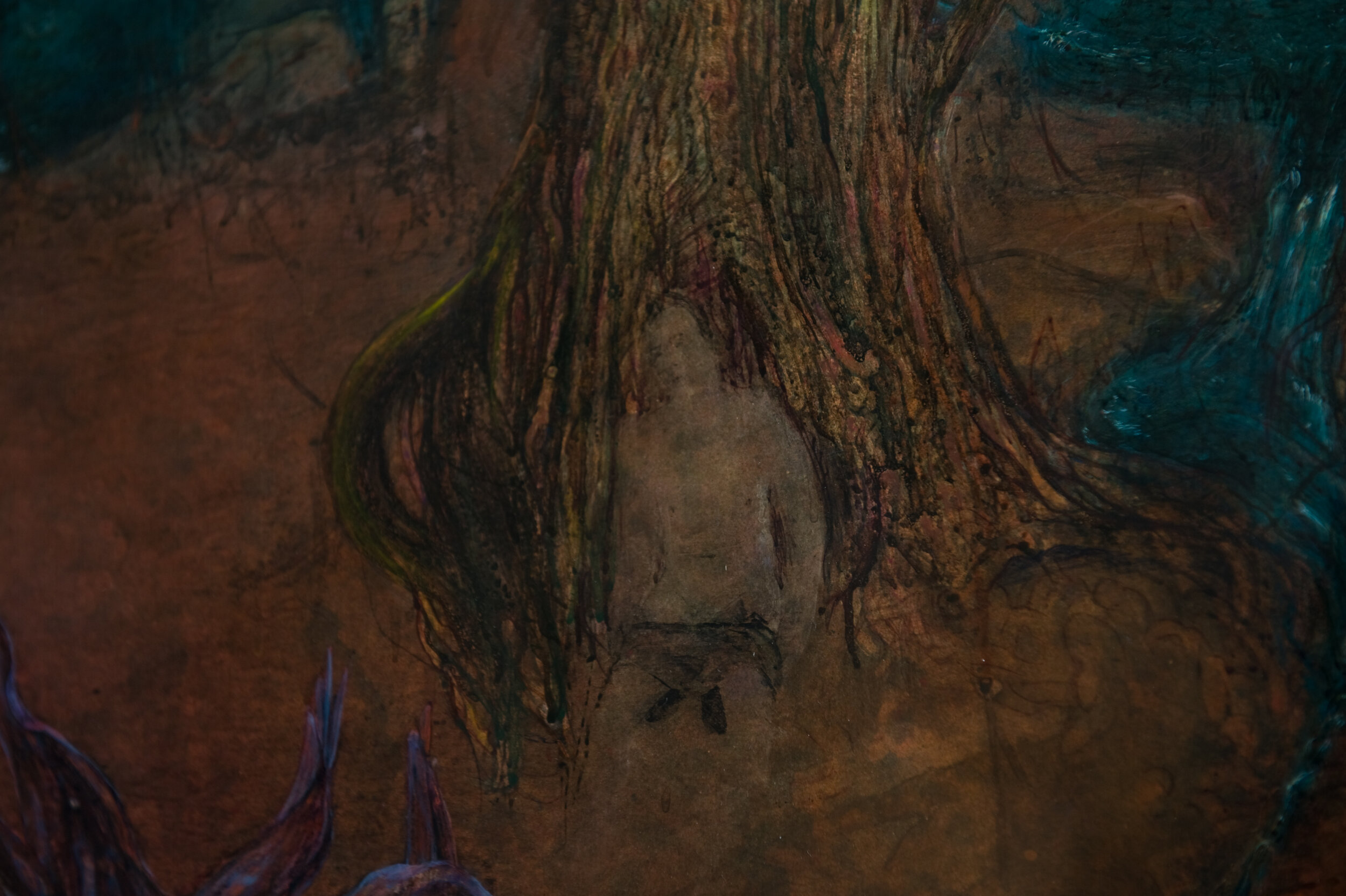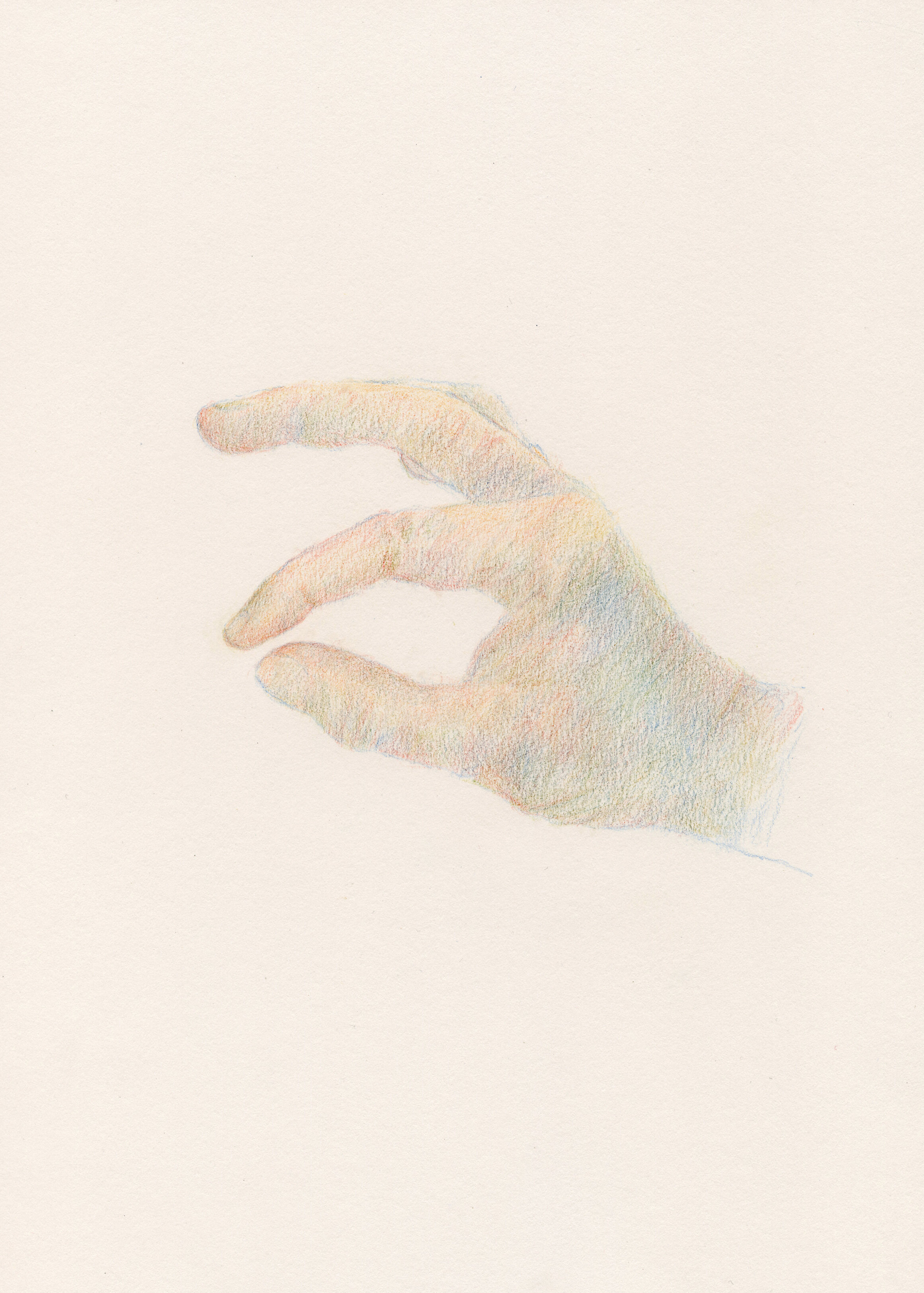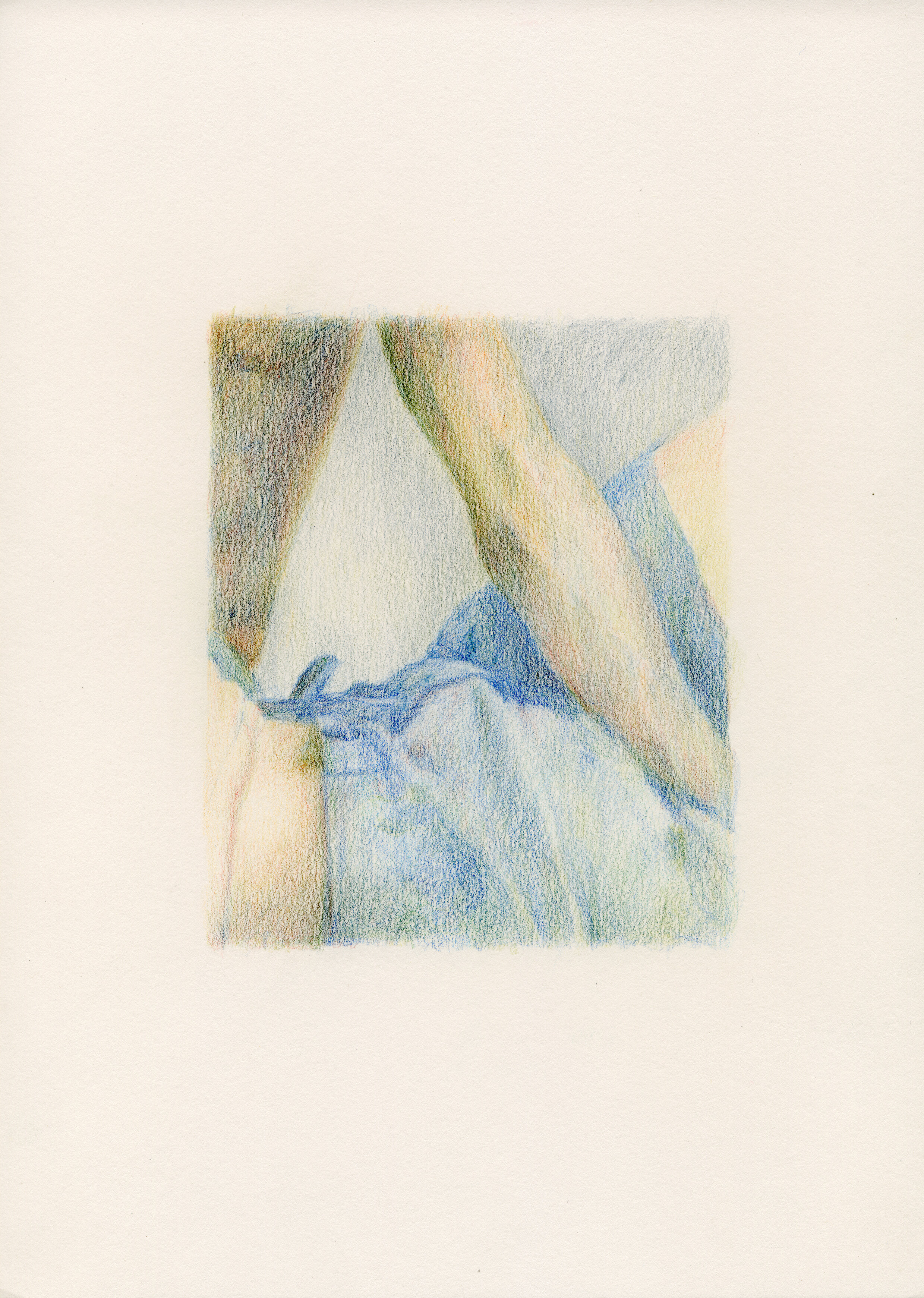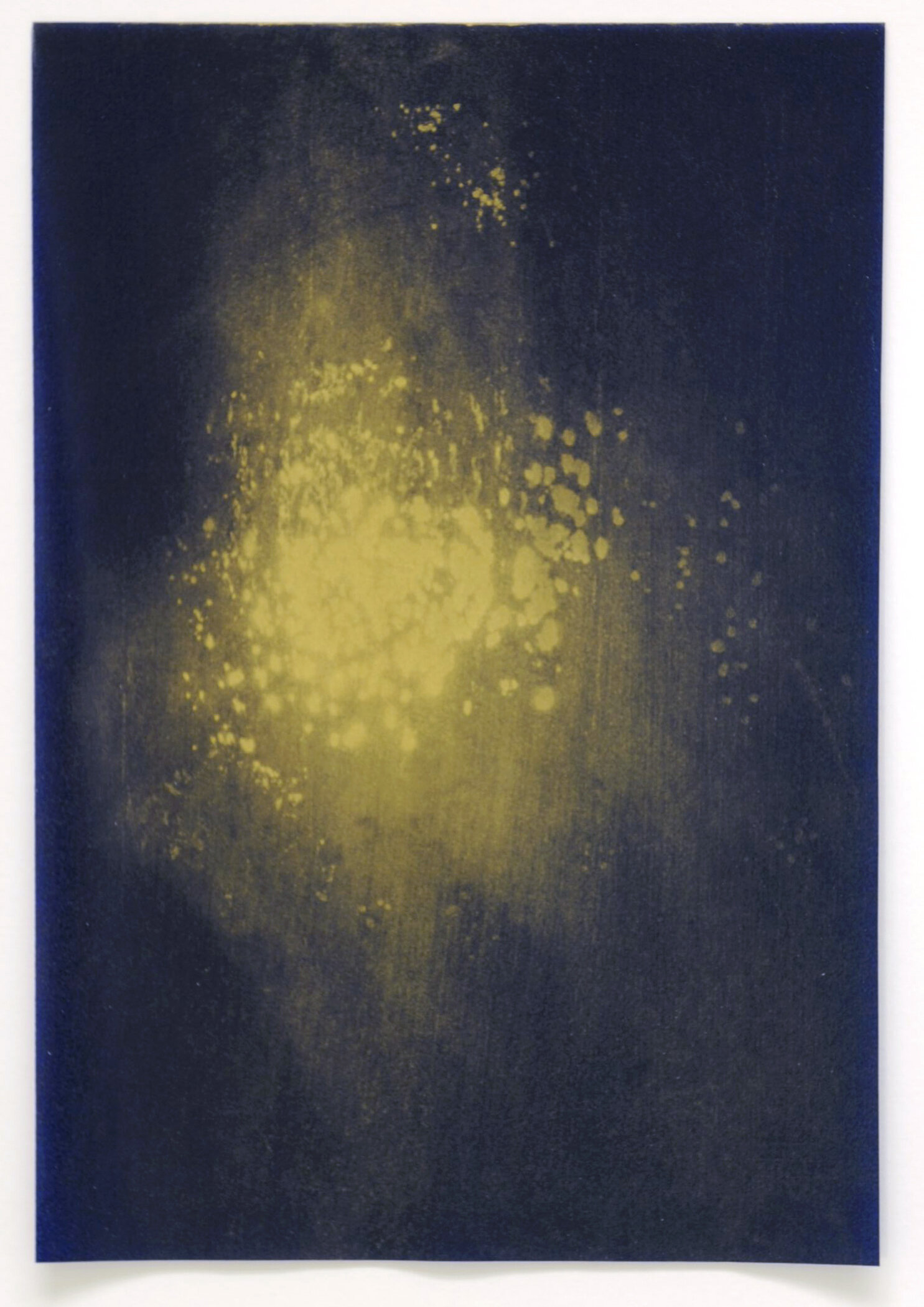Nightsong
Nick Fox
24 November 2012 – 2 February 2013
Nick Fox, ‘Nightsong’, 2012, installation view. Photo: Colin Davison
In ‘Nightsong’, Nick Fox’s second solo exhibition for Vane, and the first exhibition to occupy all of our gallery spaces, visual representations of longing are explored through an examination of pictorial and symbolic narratives drawn from a hybrid of artifacts, mythologies and timeframes.
Inspired by lunar mythologies, ‘Nightsong’ muses upon the spiritual panacea of moonlight and explores the physical and emotional instability and the bittersweet intensification of longing that comes as a result of rejection and loss. Glass sculptures, video installations, photography, and sound work created over the past two-and-a-half years are presented alongside new paintings, drawings and cyanotype prints, revealing a highly personal vision.
The video, The Holy Island of Lindisfarne, Northumberland, 2009, (White Moon) (2011), has been made as a response to Fox’s repeat visits to Holy Island on the coast of Northumberland, and placed opposite the related work, Obrestad Havn, Hå kommune, 2010 (2011), created in response to the historic area of Hå in Norway. Through this diptych of videos, the audience seemingly observes a ritual act: Fox scrying for revelation in a magic mirror. The films follow the elusive play of shimmering light across a black meniscus of water. Shot at night within the sanctuary of each of the sites’ harbours, the manmade haven of the breakwater offers a space for contemplation.
Nick Fox, Lasso, 2012, cyanotype on Heritage Rag, 185x265cm. Photo: Colin Davison
Nick Fox, True Love’s Knot, 2012, cyanotype on Heritage Rag, 265x185cm. Photo: Colin Davison
In True Love’s Knot (2012), one of two large-scale cyanotypes, the image of a ‘true love’s knot’ – once a common symbol on sailors’ wedding rings – has been developed overnight using the actual light of the full moon.
Hanging on the gallery walls is a suite of three highly polished circular paintings, including the eponymous Nightsong (2012), that indicate Fox’s fascination with the gaze either as active voyeur or as passive witness. There are literary influences at play here, in particular the decadent writings of Oscar Wilde and French novelist Joris-Karl Huysmans, giving rise to a keen sense both of the pleasures and the limits of double meanings in the construction of codes. Elsewhere in the gallery sits Murmuring (2009-11), a pool of paint resembling a dark oily stain of water, around which stand a collection of sculpted glass objects that are simultaneously reflected both in the pool, and the mirrored paintings, fusing a symbolic role of botanical imagery to Fox’s themes of desire, longing and loss.
Come Undone (2011) appears at first sight to be an intricately crafted piece of antique lace draped over a baroque stand. In fact the object has been carefully cut from acrylic paint and the stand constructed from glass, the work revealing a devotion to labour in its process, prompting discussion about the subtle relationship between art and craft.
In his series of delicately observed figurative pencil drawings, Fox transforms the found taboo image into one of intimate and emotive experience in which languorous male figures emerge from the surface of the paper. Elsewhere, in his carbon paper drawings, Love’s Sigh (2012), this emotive role is applied to a range of eclectic images given a symbolic dusting of gold; the gold dust used being a gift from Fox’s first lover almost twenty years ago.
Nick Fox, Obrestad Havn, Hå kommune, 2010, 2011, video, 12:21min. Photo: Colin Davison
Nick Fox, The Holy Island of Lindisfarne, Northumberland, 2009, (White Moon), 2011, video, 9:17min. Photo: Colin Davison
A version of Walter Dana and Bernard Jansen’s song, Longing for you, popularised in 1951 by American singer Teresa Brewer’s recording, and here re-configured as a repeating purely vocal track, drifts mournfully through the gallery.
Running throughout the ‘Nightsong’ series is an interest in mythologies and folklore and their enduring, shifting representation. While themes of longing, loss and desire form the mainstay of Fox’s practice, it is the durational qualities that separate this incarnation from his previous work. ‘Nightsong’ marks a process for Fox of spiritual, emotional and physical analysis, introspection, and evaluation.
Nick Fox, ‘Nightsong’, 2012, installation view. Photo: Colin Davison
Nick Fox, ‘Nightsong’, 2012, installation view. Photo: Colin Davison
Nick Fox, ‘Nightsong’, 2012, installation view. Photo: Colin Davison
Nick Fox, ‘Nightsong’, 2012, installation view. Photo: Colin Davison
The Longing Disco Friday
1 February 2013 7:30pm – 12am
A live event, The Longing Disco, will be held to mark the end of ‘Nightsong’ at Vane gallery.
A project started during Fox’s residency at the National Glass Centre, Sunderland, in 2009, The Longing Disco recreates the nostalgia of the ‘Lucky 7s’ disco where everyone brought their own records to the party. Disco guests are invited to nominate records with personal significance, as well as bring along their personal stories of courtship, romance, unrequited love and hope.
Records have personal significance: songs played during the first rush of passion, break-up songs, proposals, secretive encounters, last-snog-of-the-night songs. All musical tastes are welcome.
All The Longing Disco guests have the opportunity to anonymously record the reason behind their song choices in a specially created recording booth. These recordings are compiled as a limited edition vinyl record, celebrating the power of music to evoke a cultural and personal longing that can unite us all. The vinyl record is available from the Vane Shop.
Take a video tour of the exhibition
Share this page

























